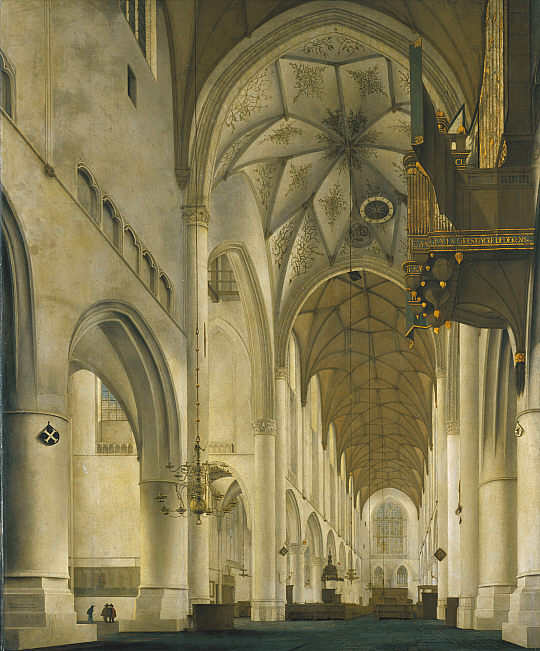Next Saturday is Reformation Day, marking the anniversary of the day (October 31, 1517) when Martin Luther posted his famous Ninety-five Theses on the door of the church in Wittenburg in Germany. So this week’s picture is one of the most beautiful depictions of the interior of a reformed Protestant church ever painted: the Interior of St Bavo’s Church, called the ‘Grote Kerk’, at Haarlem, by the seventeenth-century Dutch painter Pieter Jansz. Saenredam, which can be seen at the National Gallery of Scotland in Edinburgh. The artist signed the work with a proud flourish in the graffiti inscription at the base of the great white column in the left foreground: “Pieter Saenredam finished painting this the 27 February 1648”. When he died, seventeen years later, at the age of 68, he was aptly laid to rest in this same church – not far from the spot where, in his painting, three diminutive burghers stand conversing in their cloaks and hats.
The Reformation is more closely identified with the destruction, rather than the creation, of religious art. John Calvin, whose spirit presided over the reform of the Protestant churches of the United Provinces of Holland, fervently believed that religious images of all kinds encouraged superstition and idolatry. His followers carried out Calvin’s iconoclastic prescriptions to the letter, stripping churches of painting and sculpture, taking down statues of the saints and the prophets, replacing stained glass with clear and whitewashing over the painted stories from Old and New Testament that had previously decorated their walls. The rood screen across the nave, surmounted by a carved image of the crucified Christ, was removed and replaced by the preacher’s pulpit. The painted altarpiece was taken away and replaced by the tablets of the law, the ten commandments written out for all to...


